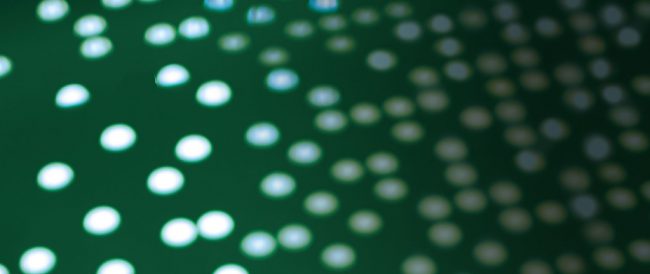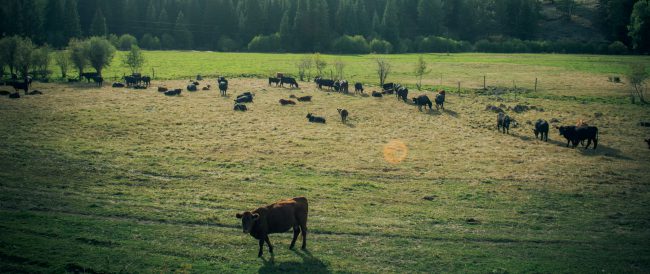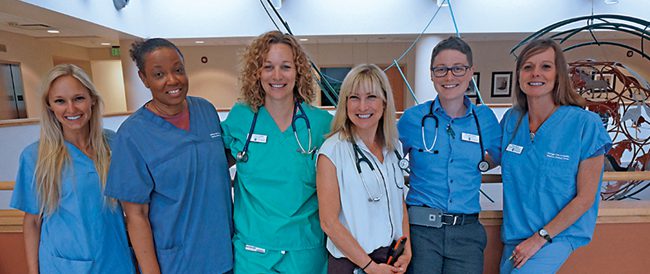 Read More
Read More
The term human-animal bond usually conjures images of a person snuggling a cat, walking a dog, or spending time with another pet. The animals that society relies on for meat, milk, and other agricultural products are often left out of the conversation. Yet, their owners and caretakers do form a bond with them.

“It’s a different bond,” says Dr. Janice Swanson, director of Animal Welfare for the MSU College of Agriculture and Natural Resources’ Department of Animal Science and professor for the College’s Department of Large Animal Clinical Sciences. Her research focuses on animal behavior and welfare. “The relationships we have with production animals are different from those we have with companion animals, but it doesn’t make them any less important. Just different.”
The differences may arise from how these animals exist in our lives. Farmers manage them in large groups, so using individual names and relating to individual personalities may be unrealistic. Usually, a number identifies them. But, that doesn’t mean the human-animal bond doesn’t exist.
“We still form bonds with these animals, especially ones we work with closely,” says Swanson. “Farmers may form a bond with the lead cow, or a veterinarian might bond with an animal who had a difficult birth and required special care.”
Swanson says it is about having empathy and understanding the course of life that each animal follows. Companion animals are just that, companions. People keep them for life enrichment. Production animals have a different purpose. They support the demand for food and other byproducts around the world. Sometimes, this purpose is tied to a definitive end.
“Empathy is what allows us to give these animals a good quality of life,” says Swanson. “Without empathy, farmers, veterinarians, ranchers, and caretakers wouldn’t have the standards and practices in place that we do have today. Empathy allows us to handle the animals well and in a way that, to them, s perceived as being handled well. It’s what enables these professionals to focus on the welfare of their animals, to advocate for them. You can’t do that without empathy.”

Handling production animals properly means focusing on all the same basic welfare aspects that pet owners focus on for their animals. Proper nutrition, low-stress environments, prompt health care, and preventative medicine are all key in ensuring a good quality of life for production animals. These standards also benefit farmers, who raise these animals for food or fiber.
“We know that animals in low-stress environments that are given proper care can be healthier,” says Swanson. “Well-cared-for, healthy animals also are perceived by the public to produce higher quality food in addition to meeting their expectations for animal welfare. It benefits the animals just as much as it benefits consumers and serves to secure animal and public health.”
This focus on production animal welfare is not only for the benefit of the livestock. A positive experience for the animals is a result of the experience of the human employees. According to Swanson, caretakers who are empowered to work with individual animals to provide proper care and advocacy enjoy their work more, which allows them to continue providing that same quality of care on a day-to-day basis, both to specific animals and the entire group.
Dr. Matt Kuhn, DVM, graduate student with the MSU College of Veterinary Medicine’s Comparative Medicine and Integrative Biology Program, works in the College’s Meadow Brook Laboratory. Kuhn’s background of working with farmers and large animals gives him a perspective into the human-animal bond that many people do not have the opportunity to experience.
“I think the public sees farmers as using animals to make a living and to profit off of them, and veterinarians as a tool to treat disease,” says Kuhn. “Dairy farming, unfortunately, is not an extremely lucrative business. Farmers do what they do because they have a passion for farming and a love for their animals. The bond between farmer and animal is not strictly financial. Many farmers know their cows just by sight, which is incredible, given that some farms in Michigan have upwards of 3,000 cows.”
“. . . while a veterinarian may not know an animal individually, there is a certain respect for our production animals and appreciation for what they are doing for us—providing our families with nutritious and delicious food. Our responsibility, then, is to provide them with the best life we possibly can.”
— Dr. Matt Kuhn
Kuhn says it is because of this dynamic that farmers and veterinarians care so much for production animals; farmers do not want their animals to suffer any more than a veterinarian wants to have to treat them.
“Both parties would much rather prevent disease before it appears clinically,” Kuhn continues. “This has been an emerging role that veterinarians have taken on to a greater degree in the past decade or so. Many are spending much of their time working with farmers to prevent disease rather than treat a clinical case. And, while a veterinarian may not know an animal individually, there is a certain respect for our production animals and appreciation for what they are doing for us—providing our families with nutritious and delicious food. Our responsibility, then, is to provide them with the best life we possibly can. It’s not only part of the oath we took as graduates, but it runs deep within the hearts of many food animal veterinarians.”
While the bonds between production animals and farmers, veterinarians, ranchers, and caretakers are different from those of companion animals and their owners, there is no denying they exist. This bond between production animals and their people can reflect the interaction between a human and an individual animal or a group of animals. That bond protects human consumers from illness, but it also protects the health and wellbeing of the animals. And, like companion animals can benefit human health, the bond with production animals helps preserve human health on a global scale. The human-animal bond, regardless of species, is strong, and will continue throughout time.
















